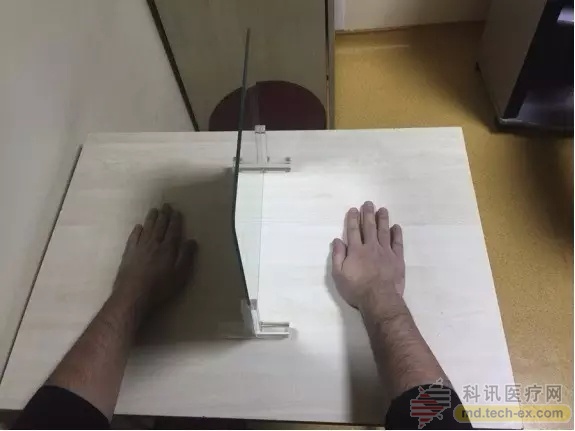Release date: 2016-08-10
Complex regional pain syndrome (CRPS) is neuropathic pain that can affect one or more limbs. Clinical manifestations include local pain, tactile-induced pain and hyperalgesia, swelling, skin temperature and color change, and limited joint mobility. And movement disorders. Type I CRPS has no specific nerve damage, and type 2 CRPS often has neurological damage.
Type I CRPS is a common complication after stroke and affects daily life due to functional impairment and severe pain. Because it is a central nervous pain syndrome, the peripheral treatment effect is limited.
Mirror treatment is a rehabilitative treatment method that has emerged in recent years. During treatment, place the affected limb behind the mirror, perpendicular to the sagittal plane. Due to the overlap with the contralateral limb, the limb is visually perceived to have a normal function. The neurophysiological effects of mirror therapy are neural networks based on motion images and motion, especially the premotor zone, parietal lobe, basal ganglia, and cerebellum. Mirror treatment can also improve the plasticity of neurons in the brain and produce a central effect on the motor cortex and sensory cortex. In addition, mirroring is simple, inexpensive, and patient-centric.
In order to clarify whether combined mirror therapy can improve motor function and type I CRPS-related symptoms based on traditional stroke rehabilitation therapy, Secil Pervane Vural from the Physical Medicine and Rehabilitation Department of the Ankara Training and Research Hospital in Turkey designed a single-blind randomized controlled trial. The results were published in the April 2016 issue of Archives of Physical Medicine and Rehabilitation.
A total of 30 patients with first stroke were included in the study, all with CRPS. They were randomly divided into mirror treatment group and control group, with 15 cases in each group. Both groups received traditional stroke rehabilitation for 4 weeks, 5 days a week, 2-4 hours a day, including neurodevelopmental advancement techniques, occupational therapy, exercise therapy, and speech therapy when needed. The mirrored treatment group received an additional 30 minutes of mirroring daily. Place your hands as shown in Figure 1. The patient's healthy side performs various activities, including elbow, wrist, finger flexion and extension, forearm pronation, posterior arm adduction, abduction and reversal. Ask the patient to continue to look in the mirror and imagine that the hand is in motion.

Figure 1 mirror treatment
All patients were assessed for exercise, cramps, and pain before the start of treatment and after 4 weeks of treatment. The motor function of the upper limbs and hands was assessed using the Brunnstrom grading, the wrist and hand parts of the Fugl-Meyer score (FMA), and the moving part of the FIM. The sputum was assessed using the modified Ashworth grading (MAS) and the pain assessment using the visual analogy (VAS). .
The results showed that after 4 weeks of rehabilitation, the FIM exercise scores and VAS of the two groups were improved compared with those before treatment, and the mirror group was more effective than the control group. The Brunnstrom grading and FMA scores of the mirror group were improved, while the MAS of the two groups showed no significant change.
This study showed that patients with stroke with type I complex regional pain syndrome, with the addition of mirror therapy on the basis of traditional rehabilitation, can significantly improve the motor function and pain of the upper limbs.
Source: Lilac Garden
LED3 and LED5 Operating Theatre Lights
Shadowless Lamp,Led Operating Lamp,Led Operation Lamp,Led3 And Led5 Operating Theatre Lights
NINGBO MEDICAL EQUIPMENT CO.,LTD , https://www.techartmeds.com